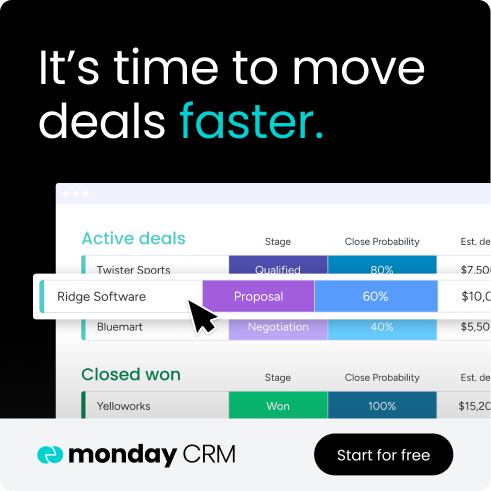Without thoughtful best practices to drive ROI and improve business processes, your CRM is essentially a glorified Rolodex. CRMs do a great job at integrating business activities, from sales to marketing and even service, but setting them up to make the most of every feature and capability takes time and effort.
Luckily, AI is now running quietly in the background to help teams make the most of CRMs and boost productivity. In this guide, we’ll cover 12 CRM best practices to optimize your sales cycle and show how choosing the right platform — like monday CRM — drives successful adoption across teams.
Try monday CRMHow CRM best practices drive business results
A customer relationship management (CRM) platform isn’t valuable just because it stores customer information. How it’s implemented and used day-to-day can break down silos, streamline operations, and create more personalized customer experiences.
When teams plan ahead and apply CRM best practices, these tools evolve into the backbone of the organization, powering higher conversion rates, shorter sales cycles, and stronger customer retention. The key is less about which platform you choose, and more about how well you set it up, maintain it, and integrate it into daily workflows.
12 CRM best practices: A quick look
Before we dive deep into every best practice, here’s a quick look to help your team get the most value from its investment. Use this as a roadmap and then explore each step in more depth.
| Best practice | Why it matters |
|---|---|
| 1. Choose the right CRM | Ensures your investment aligns with business goals and scales with growth |
| 2. Create an implementation and migration plan | Prevents adoption roadblocks and keeps migration on schedule |
| 3. Promote adoption with training and a change management plan | Drives user confidence and maximizes ROI from day one |
| 4. Customize your CRM | Makes the system intuitive for your team and boosts daily productivity |
| 5. Set standards for data hygiene and deduplication | Improves reporting accuracy and prevents costly mistakes |
| 6. Improve targeting with tagging and segmentation | Organizes customer data into meaningful groups for more accurate reporting and personalized outreach |
| 7. Leverage dashboards and analytics | Turns raw data into insights that guide smarter decisions |
| 8. Regularly audit CRM data and metrics | Keeps performance aligned with goals and surfaces hidden gaps |
| 9. Tailor your CRM strategy | Delivers workflows and dashboards that fit how your business actually operates |
| 10. Implement AI and automation | Frees up time for high-value work and accelerates sales cycles |
| 11. Push cross-department collaboration | Creates seamless customer experiences across every touchpoint |
| 12. Integrate external tools | Centralizes data and eliminates inefficiencies from app-switching |
Now, let’s break down each best practice in detail so you can see exactly how to put them into action.
Laying the foundation: CRM implementation best practices
Strong foundations make or break CRM success. Before you can focus on data or revenue growth, you need to set up the right system, build a clear rollout plan, and get your team on board. These first steps create the structure that ensures your CRM is adopted smoothly and delivers long-term value.
1. Choose the right CRM for your needs
First things first: You need to pick the right CRM. This may seem obvious, but it takes time to consider different software options, research them, test them out, and pick the one that will best suit your organization.
Before jumping straight into a new CRM system you don’t know much about, take some time to consider the following:
- Do you want a CRM with a flat fee or one that works on a subscription basis?
- Does your organization need an on-premise CRM or one that’s in the cloud for remote work?
- Do you need specialized functionality, or are your goals aligned with more basic features?
- Will the software be able to grow alongside your company, or will your team outgrow it?
- Are you in an industry that requires specific considerations (such as data privacy), or can you use a customizable CRM system?
Your best option is to make a shortlist of a few CRM platform options based on your answers to the questions above. Then, test them out and read online reviews and testimonials to narrow down your choices before settling on one. Our State of sales technology 2025 report shows that tech time-wasters account for over 42% of a team’s total work time, so choosing the right CRM from the start is perhaps one of the most important decisions you can make.
2. Create an implementation and migration plan
After settling on a CRM platform, the next best course of action is building an implementation strategy and plan. Creating a clear path for how you plan to implement a new CRM for the first time, or a new platform to replace your existing CRM, will make adoption much smoother.
If you’re handling a CRM migration, this is where you’ll plan how to transfer data like customer profiles and accounts, sales records, communication histories, and even automations and workflows your team uses regularly. Another part of your plan is setting a timeline for implementation, outlining resources you may need, and even deciding on the metrics you want to track in your new CRM.
Deciding on all of this in advance will make it easier to set standards for how your CRM should be used. Developing an implementation plan is an important step to take before you jump into training employees and moving live accounts, workflows, and customer profiles to a new system.
3. Promote adoption with training and a change management plan
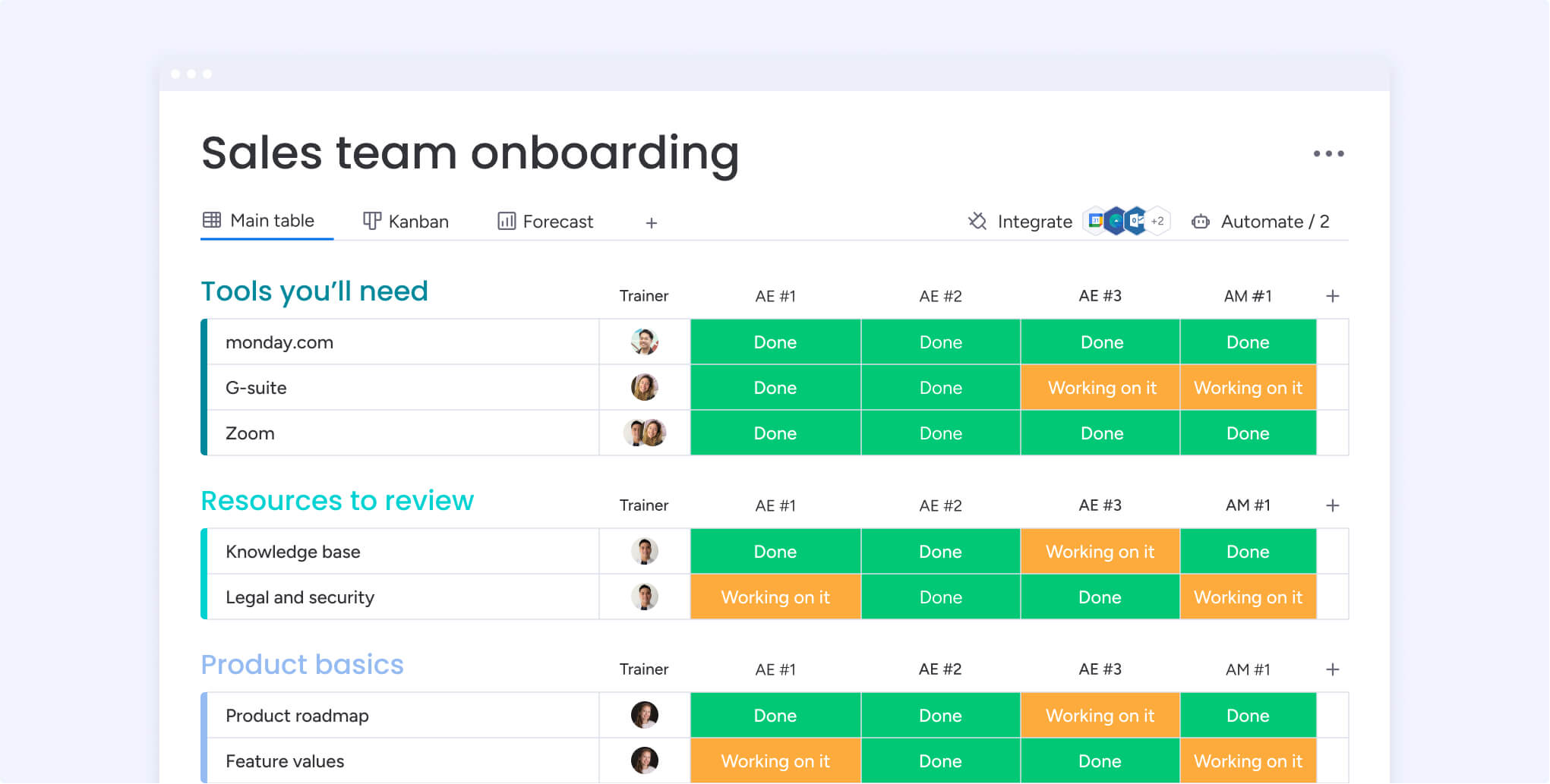
If you’re investing in new CRM software, you want to make sure you’re getting a return on your investment. You can’t reap the benefits of a CRM if your team isn’t using it to its full potential, which is why training and education early and often is a core component of success with these systems.
To help move your team from outdated software and practices to a new platform, first make sure key resources are easily accessible. Things like training documentation and learning modules, walkthroughs, continuing education, and even access to the vendor for help solving issues will make adoption a lot smoother.
In addition to your implementation plan, you may also want to consider building a change management plan that covers implementation, along with training and onboarding. A change management plan can help you map out how to get from your current state, which may be scattered spreadsheets and manual workflows, to your desired goal, which is using a CRM to improve efficiency and productivity.
4. Customize your CRM to your liking
Most CRM platforms are customizable on purpose. You’re meant to mold the system to your exact needs, whether that’s a specific industry use, unique workflows, or fitting it to remote teams. Tailoring your CRM from the get-go will make it a lot easier for your team to use the features they use most often.
Some examples of different ways to customize your CRM include:
- Industry-specific fields and workflows: Healthcare teams can add HIPAA-compliant patient forms and appointment scheduling, while real estate agents can integrate MLS listings and commission tracking.
- Sales pipeline customization: Configure deal stages that match your actual sales process, set up automatic lead scoring based on your ideal customer profile, and create territory-based lead assignment rules.
- Marketing campaign integration: Marketing teams can set up automated email sequences and dashboards to track campaign ROI, and create lead nurturing workflows that trigger based on website behavior or engagement levels.
- Customer service enhancements: Service teams can customize ticket categories, set up escalation rules for high-priority issues, and create knowledge base integration for faster case resolution.
- Role-based dashboards and permissions: Create manager dashboards showing team performance metrics, sales rep views focused on pipeline activities, and executive-level reporting with revenue forecasting and strategic KPIs.
Master your data: CRM best practices for data hygiene and management
Once your CRM is up and running, the next priority is making sure the data inside it is accurate, consistent, and easy to use. Clean, reliable information is what powers forecasting, analytics, and AI-driven insights — without it, even the best CRM will fall short.
5. Set standards for data hygiene and deduplication
Data hygiene should be a core pillar of your CRM strategy. If your CRM’s data is unreliable, you can miss valuable deals, chase the wrong leads, and cause your team to work extra hard to catch up. Duplicate data, outdated information, and incomplete customer profiles are all signs that your CRM’s data isn’t reliable.
Clean data is essential for accurate reporting. If you want to access predictive analytics and sales forecasting, your data needs to be spot on. Otherwise, the reports you’ll get from your CRM won’t be reliable, and you’ll be left making critical business decisions based on incomplete data.
To avoid these risks, set a reminder to review data every month or quarter. Manage duplicates through regular deduplication processes, whether by merging or deleting records.
For example, monday CRM leverages AI to add contextual data to customer profiles and can also automatically merge duplicate data, helping teams keep data clean without much manual intervention.
6. Improve targeting with tagging and segmentation
Clean data is only valuable if it’s organized in a way your team can act on. Tagging and segmentation make this possible by labeling contacts with meaningful attributes and grouping them into categories for targeted outreach. Done right, they improve personalization, reporting accuracy, and campaign results.
Some best practices to follow:
- Standardize your tags: Keep naming conventions consistent to avoid clutter.
- Focus on usefulness: Every tag should serve a purpose in reporting, CRM segmentation, or automation.
- Segment for personalization: Group contacts by demographics, behaviors, or deal stage to tailor campaigns.
- Assess regularly: Review tags and segments quarterly to merge duplicates and retire outdated categories.
7. Leverage dashboards and analytics
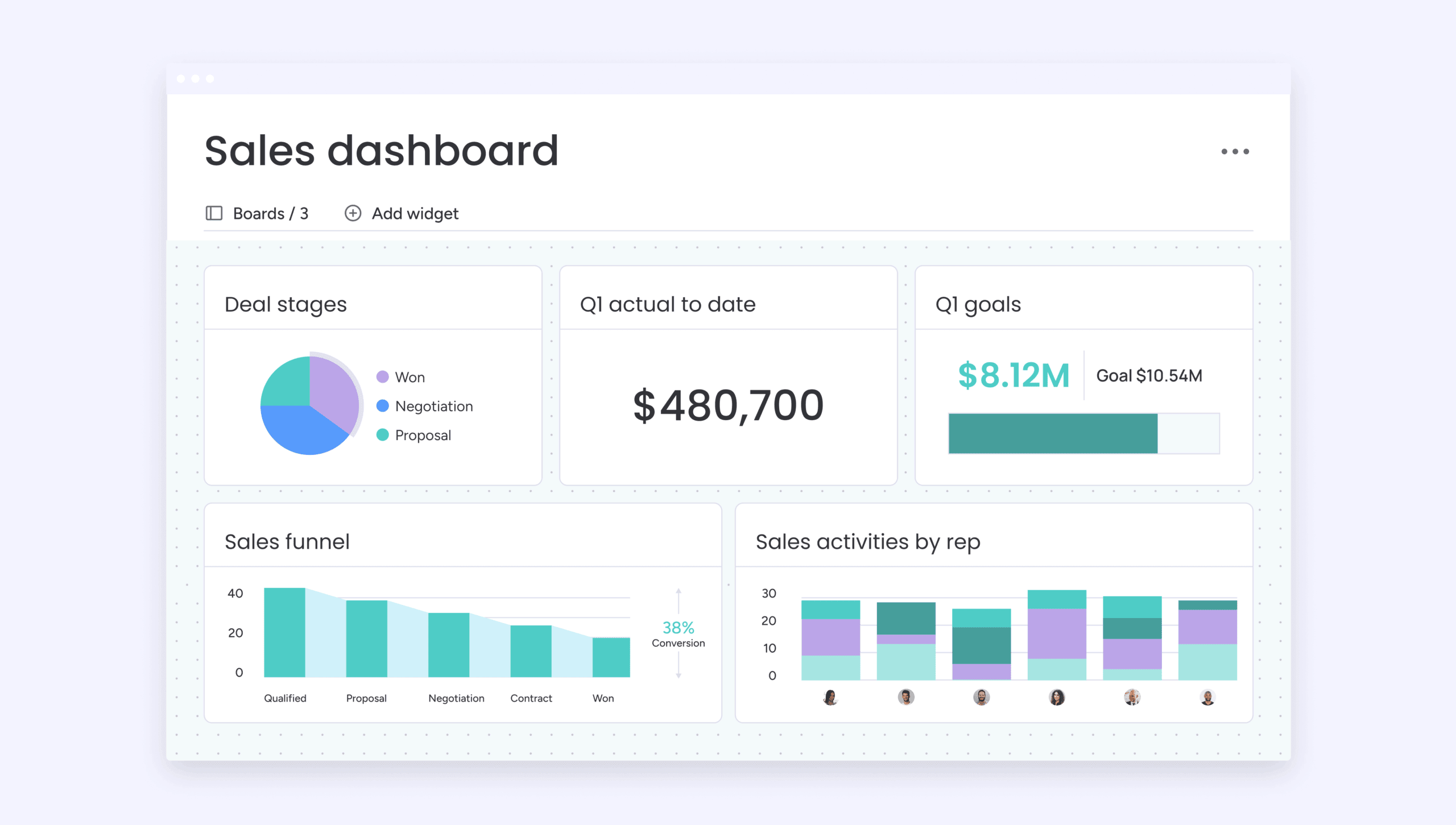
Clean data goes hand in hand with CRM reporting and analytics. After establishing your CRM data standards, you want to make sure you’re making the most of your CRM’s reporting and analytics capabilities. There are a few ways you can leverage CRM report data to improve business operations:
- Use forecasting to determine which deals to focus on
- Apply predictive analytics to determine resource needs
- Assess risk likelihood to proactively address problems
- Analyze team and individual performance
- Track sales and marketing metrics to assess goal achievement
The insights you get from your CRM can help you prevent stalled deals and focus on strategies where your team has had past success. With your CRM acting as a single source of truth on all aspects of your company’s sales data, your team can align current performance to keep everyone working towards the same goals.
8. Regularly audit CRM data and metrics
Along with maintaining data standards, you should set regular audits for both data management and metric tracking. Audits align your team on performance goals, highlight gaps in the sales process, and make sure decisions are based on accurate, up-to-date information instead of outdated records
Here are some actionable ways you can make sure you’re on top of auditing:
- Schedule monthly data quality checks to remove duplicates, update outdated contact information, and verify lead sources.
- Review your key performance indicators (KPIs) quarterly to ensure they still align with business objectives.
- Set up automated data validation rules and regular team training sessions to maintain consistency.
- Use built-in audit reports to flag unusual patterns or data inconsistencies for more efficient reviews.
The results you get from regularly auditing CRM metrics and data will allow you to tweak your workflows so that they run smoothly and are less prone to bottlenecks. Along with customer-facing data, you should also audit CRM adoption rates to make sure your team is using CRM functionalities as intended or identify areas where your team needs extra training.
Boosting revenue: Best practices for elevating sales, marketing, and service
With a solid implementation plan and strong data practices in place, your CRM becomes more than just a record-keeping system. It turns into a growth engine. By tailoring strategies to your industry, tapping into AI, and enabling collaboration across departments, you can maximize revenue opportunities and create stronger customer relationships.
9. Tailor your CRM strategy
Even when multiple businesses use the same CRM, no 2 systems will look identical. Your CRM should reflect your industry as well as your customer base and how your team is set up. When customizing your CRM platform, make sure to tailor automations, workflows, and dashboards according to elements like:
- Industry: SaaS companies might prioritize trial-to-paid conversion tracking and usage analytics, while consulting firms focus on project timelines and billable hours tracking
- Who you’re selling to: B2B teams need longer nurture sequences and multiple decision-maker tracking, whereas B2C businesses benefit from quick checkout processes and seasonal campaign automation
- Team setup: A remote team probably requires robust mobile CRM access and time-zone-aware scheduling, while international teams need multi-currency support and localized communication templates
- Sales cycle length: Complex enterprise sales need extensive pipeline stages and approval workflows, while transactional companies benefit from streamlined, fast-moving processes
- Customer relationship depth: Relationship-heavy industries like financial services require detailed interaction logging, while high-volume retail focuses more on purchase behavior patterns
The key is understanding that your CRM should work the way your business actually operates, not force your team to adapt to generic processes. Take time to map out your specific workflows before diving straight into customization.
10. Implement AI and automation
By design, CRMs help teams work more efficiently by handling repetitive sales, marketing, and service tasks. What once took hours each week can now be completed in minutes. The real productivity boost comes when you apply AI to build smarter workflows that free employees to focus on high-value activities.
Here are a few ways AI can streamline lead management:
- Scoring incoming leads based on engagement levels
- Assigning priority based on demographics, company size, or other key parameters
- Routing prospects to the best-fit sales agent based on skill set or availability
- Triggering timely follow-ups after a set period of inactivity
AI-powered CRMs give teams the ability to maximize existing resources — both technology and people — without inflating budgets or headcount. In fact, McKinsey research shows that companies that implement AI see a sales ROI uplift of 10-20%.
11. Push cross-departmental collaboration
You may initially adopt a CRM to improve sales team workflows, but these platforms can easily extend to other teams like marketing and customer support. CRMs can help companies break down silos in teams and between departments, improving productivity across the board.
As software that houses critical customer data, your CRM can quickly become your company’s system of record. All communications, whether internal or customer-facing, can flow through your CRM to make it easier for teams to follow up, track conversations, and pick up where the last agent left off.
Marketing can use sales data to shape campaigns, while service teams learn customer pain points from call logs and meeting notes. A cross-department CRM makes collaboration smoother and creates cohesive customer journeys where clients feel supported at every step.
Lastly, with mobile CRM apps, field teams like sales agents can also stay connected from anywhere. This puts the power of a full CRM system in the palm of their hands, facilitating seamless collaboration between teams at all times.
12. Integrate external tools with your CRM
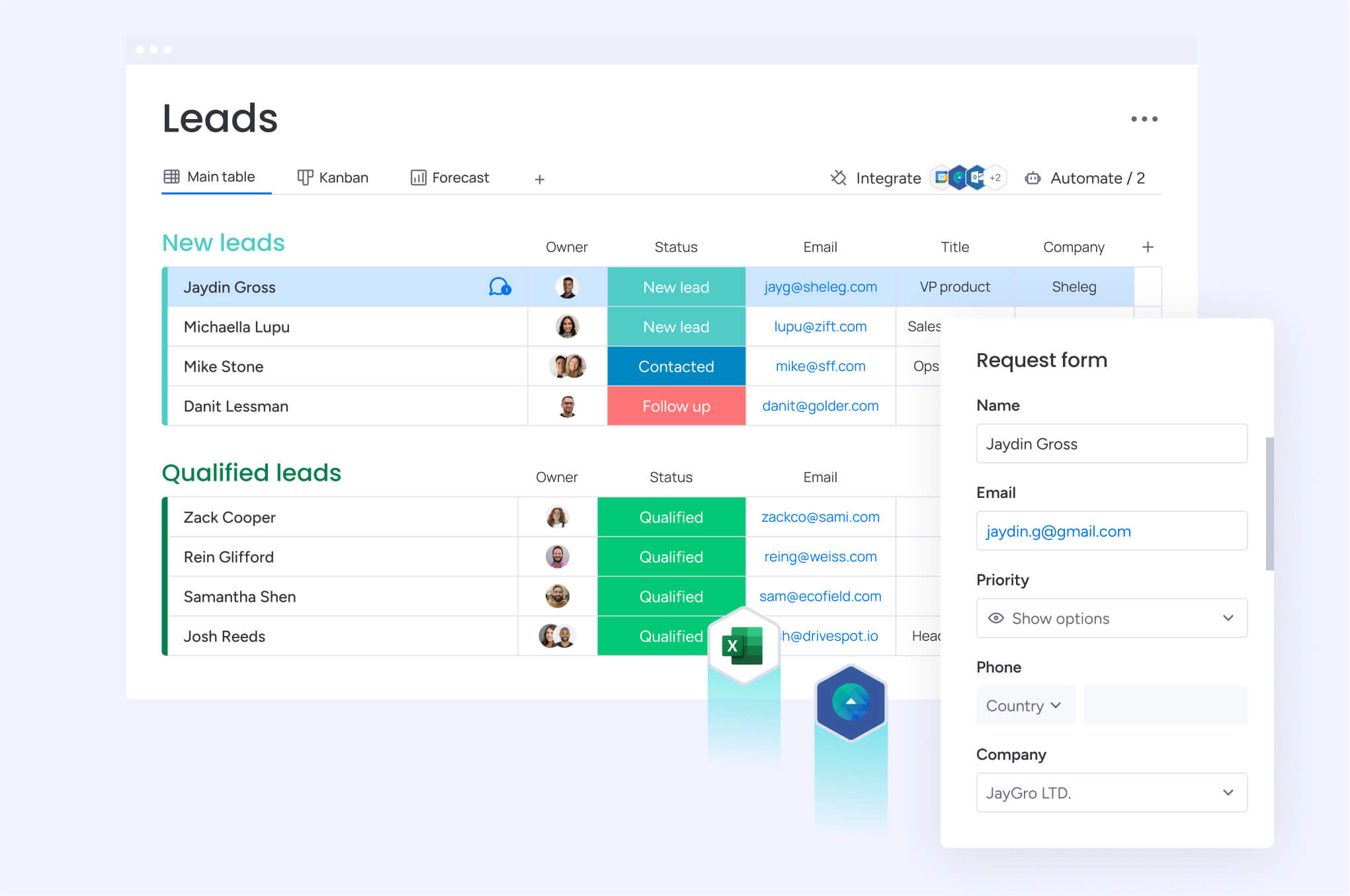
While all data should flow in and out of your CRM, it’s unlikely that this is the only tool your team will be using. To get the most out of your platform, make sure you’re integrating third-party apps and tools into your CRM so that data, communications, and workflows stay synced.
Some external apps you should consider integrating with your CRM include:
- Email marketing platforms like Mailchimp or Constant Contact can automatically sync contact data and segment lists, while campaign engagement metrics flow back to update lead scores and trigger follow-up sequences.
- Communication tools like Slack or Microsoft Teams can create CRM tasks from chat messages, send deal alerts to specific channels, and allow team members to update records without leaving their messaging platform.
- Calendar and scheduling apps such as Calendly or Acuity can automatically create contact records from new bookings, sync meeting details to customer profiles, and trigger pre-meeting preparation workflows.
- Accounting software like QuickBooks or Xero can sync invoice data with customer records, update payment statuses in real-time, and trigger collections workflows for overdue accounts.
- Social media management tools like Hootsuite or Buffer can track social interactions with prospects, monitor brand mentions, and add social engagement data to contact profiles.
Supercharge your workflows with monday CRM
Even with a solid plan, smooth CRM integrations, and strong onboarding, the wrong CRM can hold you back. Clunky, overly complex software makes adoption harder and limits ROI, but monday CRM is different. It’s flexible, easy to use, and powerful enough to deliver advanced AI capabilities that support every stage of the customer journey.
Backed by AI, monday CRM helps sales, marketing, and service teams work more efficiently and keep customers at the center. Sales can automate routine tasks, marketing can unlock deeper analytics, and service teams get the data they need to resolve issues quickly. Plus, it doubles as a task and project management tool while keeping customer data fully integrated.
Here’s a closer look at the features that set monday CRM apart:
AI predictive analytics
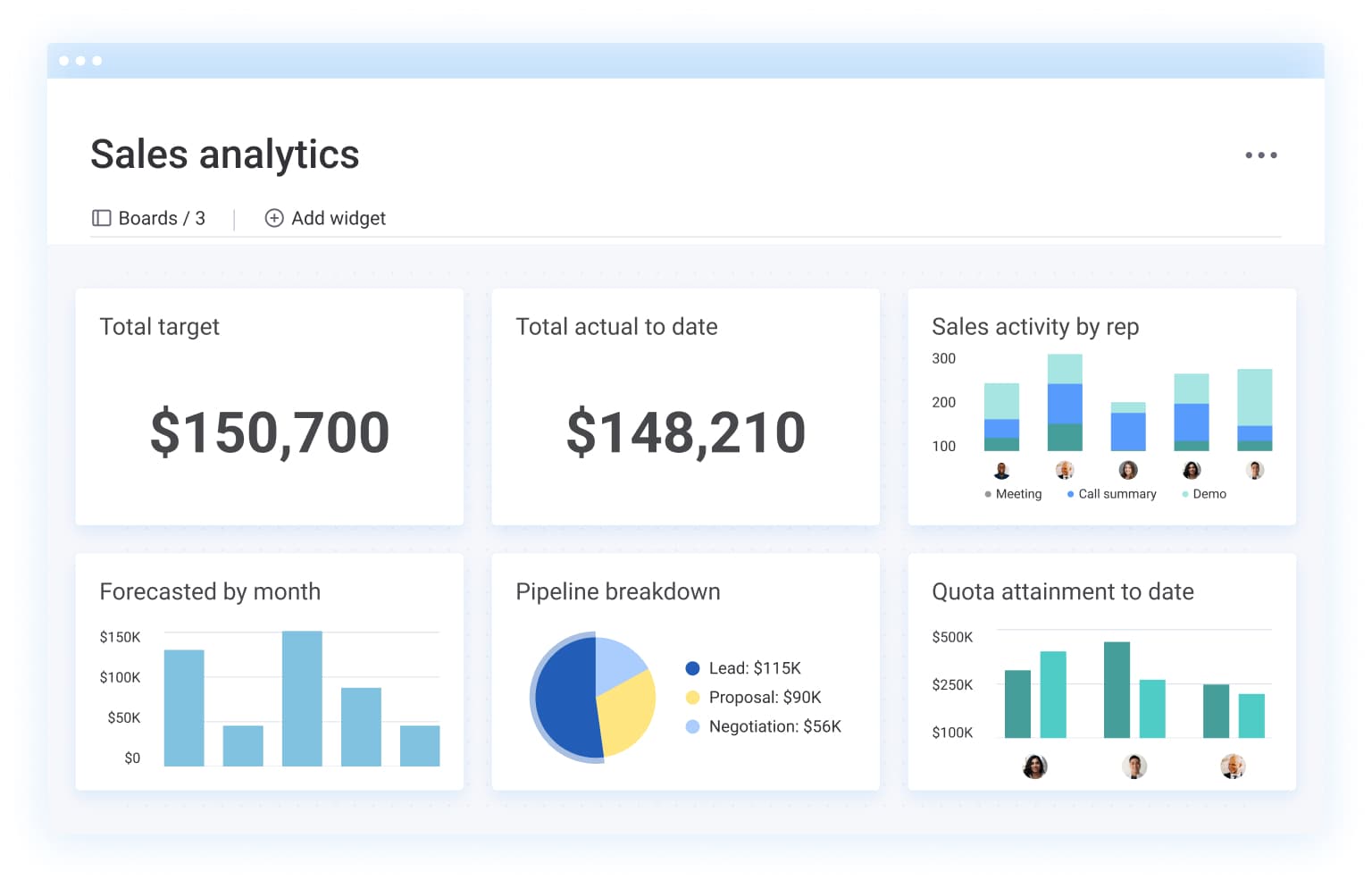
Access detailed predictive analytics and sales forecasts to better manage your pipeline and resources. Understand which deals are likely to close so your team knows where to focus their efforts, and get insights into how to prepare resources in advance so your team is never spread too thin.
Advanced workflow automation
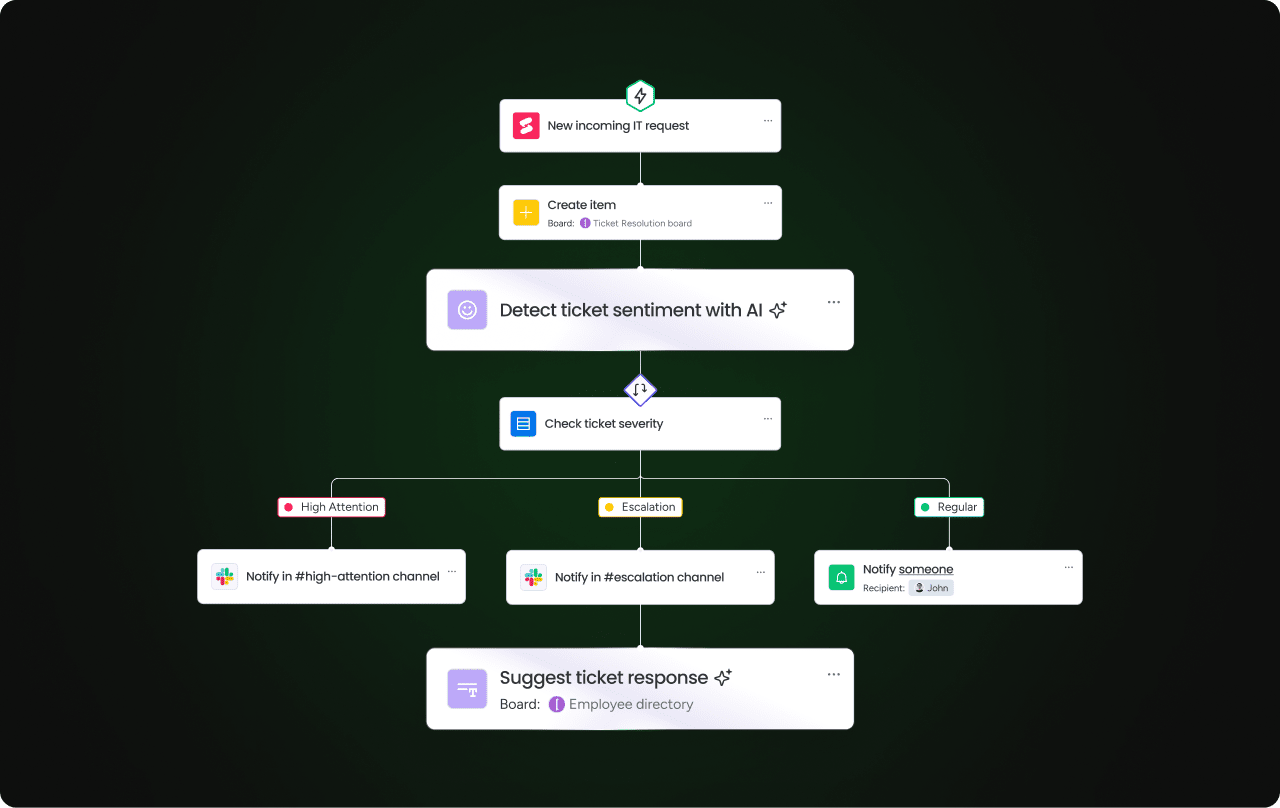
With monday CRM, teams can build advanced AI-driven workflows that handle repetitive tasks. Whether it’s seeking deal approvals, following up with prospects, or updating the status of a service ticket, users can leverage AI to build custom automations that help teams work more efficiently.
Simple AI data management
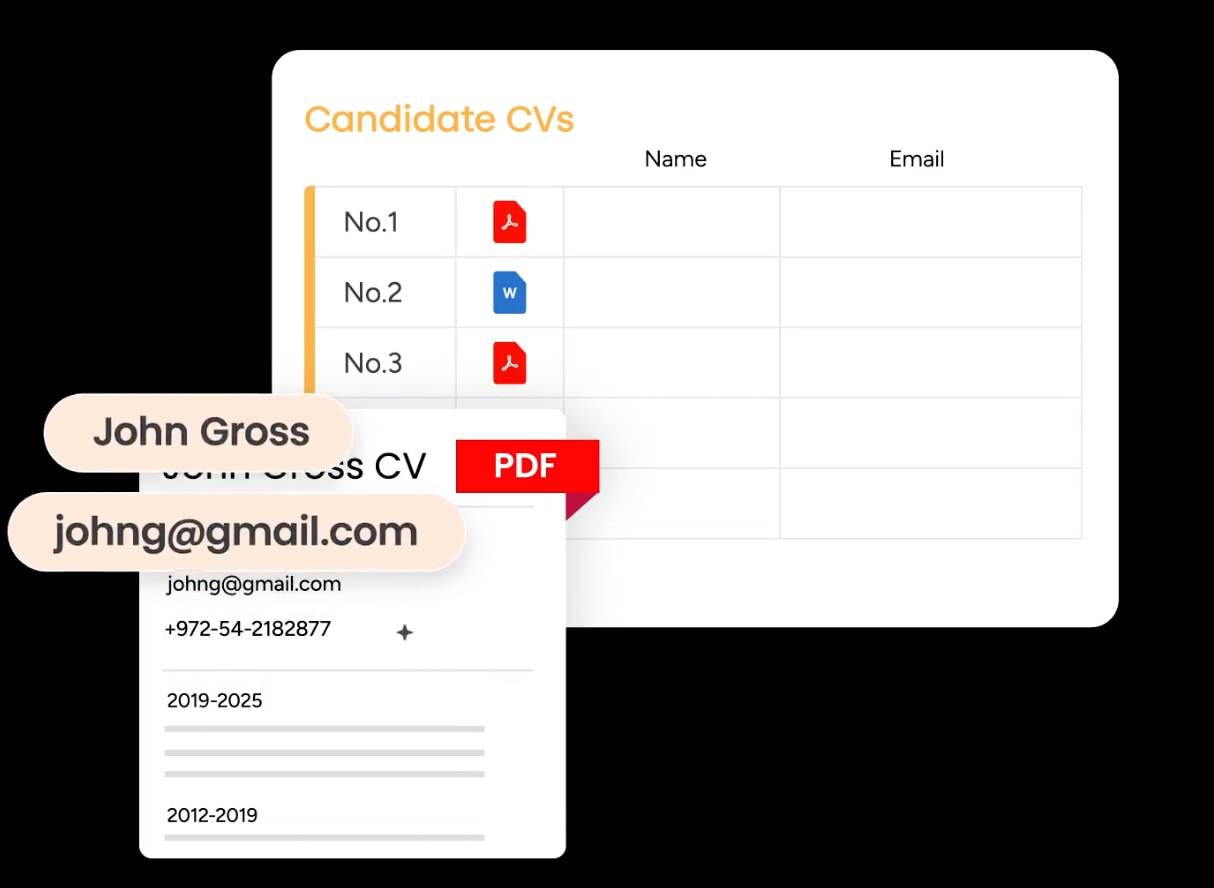
Seamlessly manage data so that your customer information is always clean, accurate, and up to date. The platform makes it easy to enrich customer profiles using AI to fill in additional information from third-party sources. Additionally, monday CRM can handle deduplication by merging duplicate records and extracting data from documents to save time and improve accuracy.
Endless customization options

With monday CRM, teams can customize everything without any technical know-how. Boards, reports, dashboards, email campaigns, and even sales content can all be customized in seconds with the platform’s easy drag-and-drop interface. Additionally, the platform’s AI makes it easy to generate custom personalized content like email follow-ups or pitch decks with a quick prompt.
The path ahead for CRM development: Emerging trends
With AI leading the way, CRM software is evolving faster than ever. Here are a few developments businesses should keep an eye on:
- Conversation intelligence goes mainstream: CRMs will move beyond data storage to analyzing calls, chats, and emails in real time, giving sales reps coaching tips and surfacing compliance risks as they happen.
- Deeper system integrations: Expect tighter CRM-ERP connections, e-commerce integrations, and native links with marketing platforms to create a unified customer view across the entire business.
- AI-driven personalization: Predictive analytics will advance from forecasting to anticipating customer intent, recommending next-best actions, and personalizing outreach at scale.
- Compliance and governance: As data privacy regulations expand, CRMs will increasingly include built-in tools to manage consent, enforce data retention policies, and keep audit trails transparent.
As these capabilities become standard, the platforms that win will be the ones balancing power with ease of use — so teams can adopt them without friction.
Turn CRM best practices into action
The real ROI of a CRM comes from how you use it. By following proven best practices — choosing the right platform, keeping data clean, leveraging AI, and driving adoption — you’ll unlock the full potential of your investment.
It becomes easier with monday CRM and the combination of advanced AI with intuitive workflows, so sales, marketing, and service teams can work smarter and keep customers at the center of every decision.
Try monday CRMFAQs
What are the best practices for unifying CRM and ERP data for forecasting?
The best way to unify CRM and ERP forecasting data is to establish a single source of truth by mapping data fields between systems and implementing real-time synchronization. If you need to, use integration platforms to automate data flow, ensuring consistent customer records, inventory levels, and financial data. You should also create unified dashboards that combine sales pipeline data with operational metrics for accurate revenue and demand forecasting.
What are some best practices for 2-way CRM data synchronization?
To improve the flow of 2-way CRM data synchronization, define clear data ownership rules to prevent conflicts, implement field-level mapping to ensure accuracy, and establish automated sync schedules during low-usage periods. Use conflict resolution protocols for duplicate entries, maintain audit trails for changes, and test synchronization regularly. Additionally, don’t forget to prioritize critical data fields and set up error notifications for failed sync attempts.
What are some CRM best practices for small businesses?
Small businesses using CRMs should start with essential features and avoid over-customization from the get-go. It’s also a good idea to focus on data quality over quantity, implement simple automation for repetitive tasks, and ensure mobile accessibility for remote work. Choose affordable, scalable solutions with easy onboarding, and make sure to train all users thoroughly and establish consistent data entry standards from day one to maximize ROI.
What are the biggest challenges in CRM implementation?
User adoption remains a primary challenge of CRM implementation, followed by data migration complications and integration difficulties with existing systems. Poor data quality, inadequate training, and unrealistic expectations about timeline and results create additional hurdles. Resistance to process changes, insufficient customization planning, and lack of executive buy-in also commonly derail CRM implementations.
What metrics should a company track to measure CRM success?
Companies should track user adoption rates, data quality scores, and sales cycle length reduction. Monitor lead conversion rates, customer retention improvements, and sales productivity metrics. Businesses should also measure customer satisfaction scores, pipeline accuracy, and revenue attribution to CRM activities. Finally, don’t overlook system usage analytics, time-to-close improvements, and ROI calculations to demonstrate tangible business impact.
 Get started
Get started 


